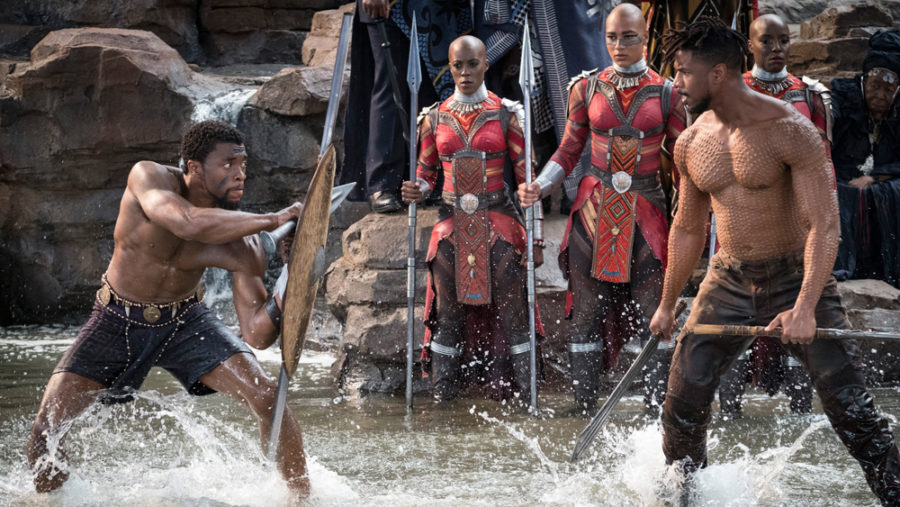The release of “Black Panther” has been interesting to say the least. The hype train, combined with social justice movements has taken this film to new heights. It has a majority of African Americans working both on-screen and behind-the-scenes.
In short, it’s a by-the-numbers Marvel movie. Truth be told, I have seen every Marvel movie to date and the franchise formula has made most of Marvel’s new movies very predictable.
As in most Marvel movies, there are magic space objects that are important to the plot for no reason. The main hero nearly dies at one point but is saved by pure plot armor. Several CGI filled fight scenes, a comedic relief, as well as a few oddly placed or timed jokes and someone that’s close to the main character dies before we get a chance to know them.
The bad guy is as forgettable as he is evil, like the dark elves from “Thor: The Dark World” or Obadiah Stane from “Iron Man.” Evil, but with some charisma behind him, like Loki from “Thor” and a well-rounded bad guy with a sad backstory caused by the main character, like Spider-Man’s Volture or “Civil War’s” Helmut Zemo. Oh, and Stan Lee makes a cameo of some kind.
“Black Panther” starts sometime after “Captain America: Civil War,” with the new Black Panther, T’Challa (Chadwick Boseman), returning home to be officially crowned king of the hyper-advanced kingdom of Wakanda. T’Challa has to take a questionable magic herb that grants him superpowers.
His first task is to track down Klaue (Andy Serkis), a mercenary who stole a lot of Wakanda’s Vibranium, a super steel used in all of their tech. There’s also Killmonger, an MIT grad-turned-black-ops soldier straight out of an Oakland ghetto, who’s helping Klaue to take over Wakanda and use its advanced weapons against all white people for the evils they have done. On top of that, T’Challa is dealing with tribe heads who want to take on a more active role in the world, either though peaceful or violent means.
The CGI effects were amazing throughout the film’s action scenes, with bullets flying, cars flipping as spears hit them, holograms projected from their iPhone-like beads that look more sandy than light. When the speed of the film slows, it starts to look a bit uncanny, like at the cliffs where most of the one-on-one duels take place, or the overview scenes of the city of Wakanda. The bird’s-eye shots of the Wakanda seemed too safe, like Dubai with hints of Africa.
The supporting cast is mostly made up of black actors, with a focus on four strong black women: the former queen, Angela Bassett as Ramonda; the 16-year-old genius, Letitia Wright as Shuri; the ex-lover superspy, Lupita Nyong’o as Nakia; and finally the elite warrior and bodyguard, Danai Gurira as Okoye. Despite each having their moment in the spotlight, the film fails to really flesh out all of them.
Overall, it’s a decent film. It’s not going to be the next “Moonlight”, “Hidden Figures” or “Malcolm X”, but it’s still a mark for people of color in the film industry.




